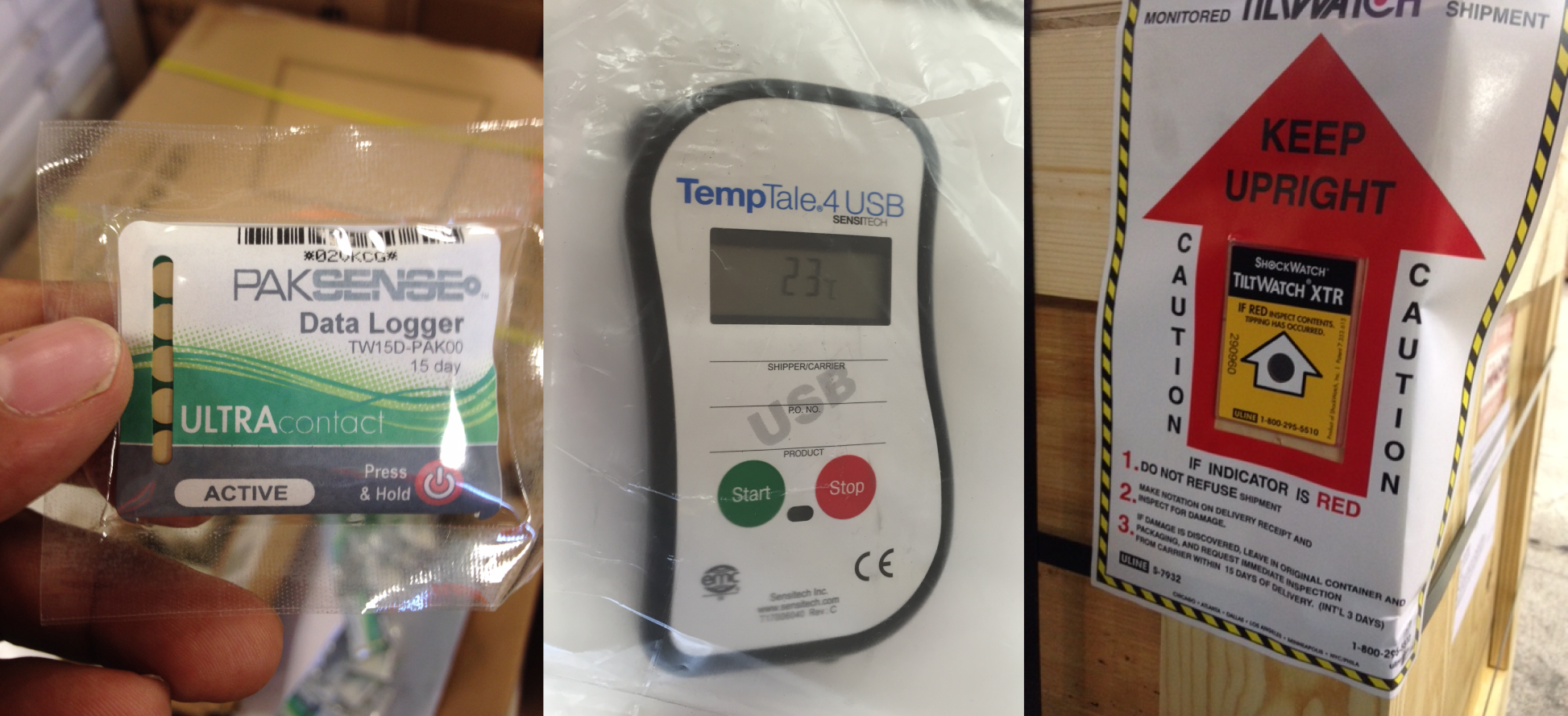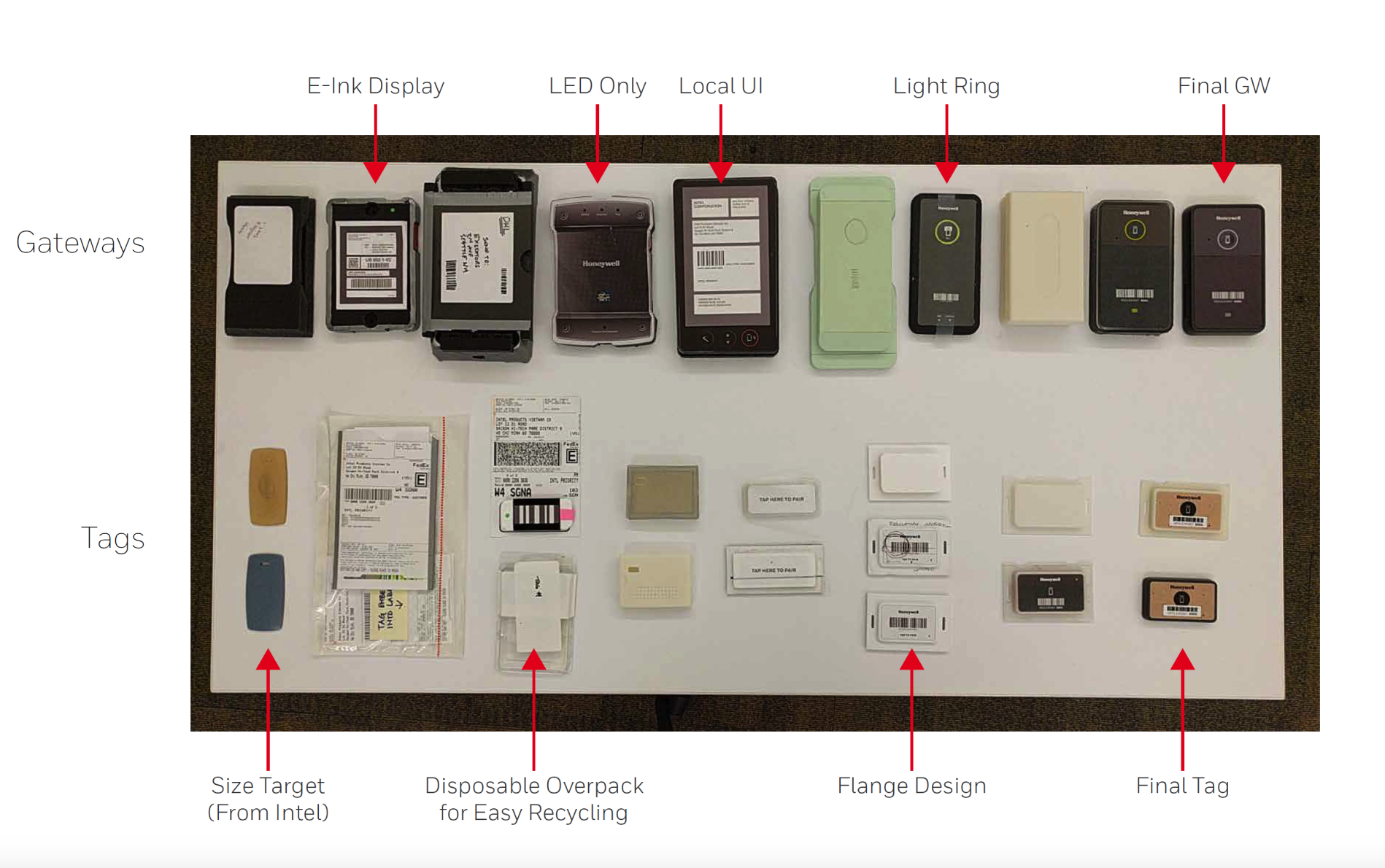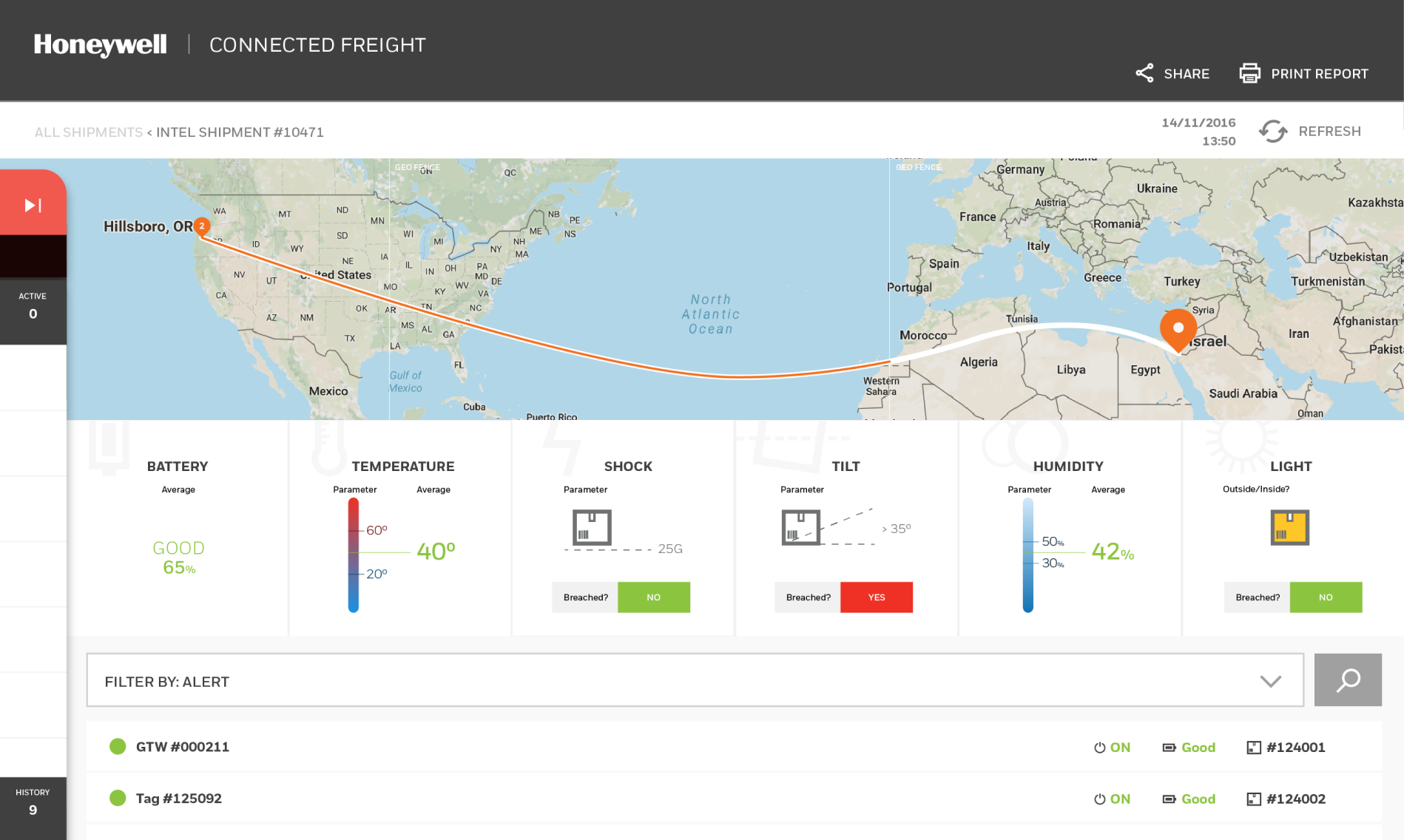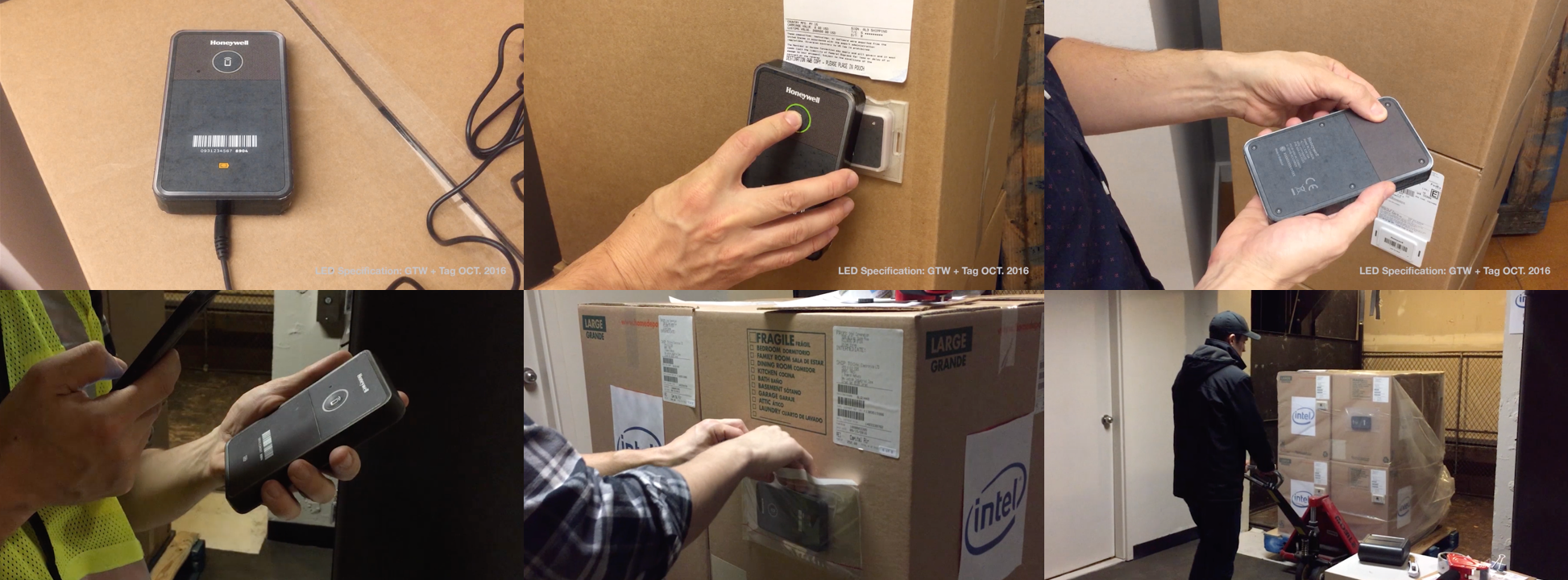Connected Freight | IoT
Honeywell and Intel partnered to develop an IoT solution to track the shipment in real-time. The goal for this project was to create a system that logistic provider will use to monitor the health of the shipment such as shock, tilt, temperature, and light through the whole journey of the shipment.

(Image: the complete offering of Connected Freight product, Gateway and Tags)
Expensive solution and no real-time tracking capability
It is important that the shipment gets to the destination on time without any damage especially for high capital goods. However, the current tracking solution is expensive to deploy and it's incapable of providing real-time information. For Intel, this latency accounts for billions in lost revenue.

(Illustration: The current problem)
Design process

1. Research (OVOC, Personas, User journey map)
2. Outcome driven design approach
3. Iterative design on physical and digital experience:
a. Physical: Different form factors for both Gateway and tags
b. Digital: Information architecture, wireframes, and, visual design
(click through prototype, prototype video, tutorial videos)
4. User testing, field test
1. Research
To better understand our user and market, we visited 3rd party logistics (3PL) sites across Europe and US. The market that we focused on was capital equipment, high value (technology) and cold-chaining (pharma). The end to end user journey map (Focusing on physical, focusing on digital) helped our team to deeply understand all phases of a shipment and develop a solution which seamlessly integrates into customers’ unique process.

(Image: Various tracking solutions from the field)
2. Outcome driven design approach
Based on field research and insights that are gathered, we used the methodology called “Outcome Driven Design Approach” to focus on the ‘job’ that user will ‘hire’ products or services to accomplish.

(Image: The landing page)
3. Iterative design on physical and digital experience
a. Physical design
We explored different form factors for gateway and tags that will be provisioned and installed on the shipment. We worked with our 3PL partner to evolve the design that would be best for the user and the environment.

(Image: Evolution of hardware design exploration)
b. Software design
After the gateway and tags get provisioned and installed on the shipment, the software shows the shipment's health in real time from the origination to the destination. We explored how we can best show the shipment journey and important notification that user needs to be aware of.


(Image: Top - wireframe of a single shipment page, bottom - POC of a single shipment page
We also produced a prototype video to share concepts and illustrate how the solution will work at each stage in the journey. We used a technique called ‘body-storming’ to act out potential workflows. This helped the team to find any missing pieces in the journey and also get meaningful feedback from the stakeholders.
Check out the end to end video!

4. User testing
125 Gateways and 250 Tags and MVP for Command Control and mobile app were produced for field studies with our partners. Check out the instruction video that we created to help with the user.
The outcome
Connected Freight solution provided confidence to logistic companies on tracking the health of the shipment real time from beginning to end. It is simple, adaptable, and it requires minimal user training. The solution was designed to integrate seamlessly into any current operating procedure of logistic environment.
Want to learn more about the project in detail? View the walking deck.
My involvement
The core Honeywell design team was made out of UX lead, industrial designer, and interaction/visual designer (myself). We worked closely with Intel's UX team and three 3rd-party logistics providers (3PLs). Our internal engineering teams and our design manufacturer also collaborated in order for the team to move fast and deliver the needs of our user.

Tools used: Illustrator, Adobe XD, Premiere Pro